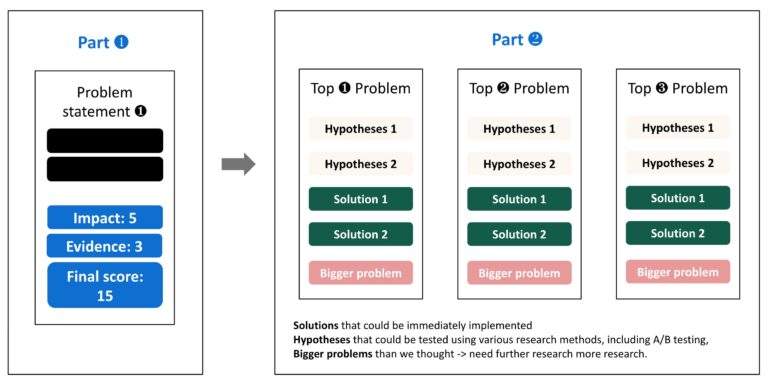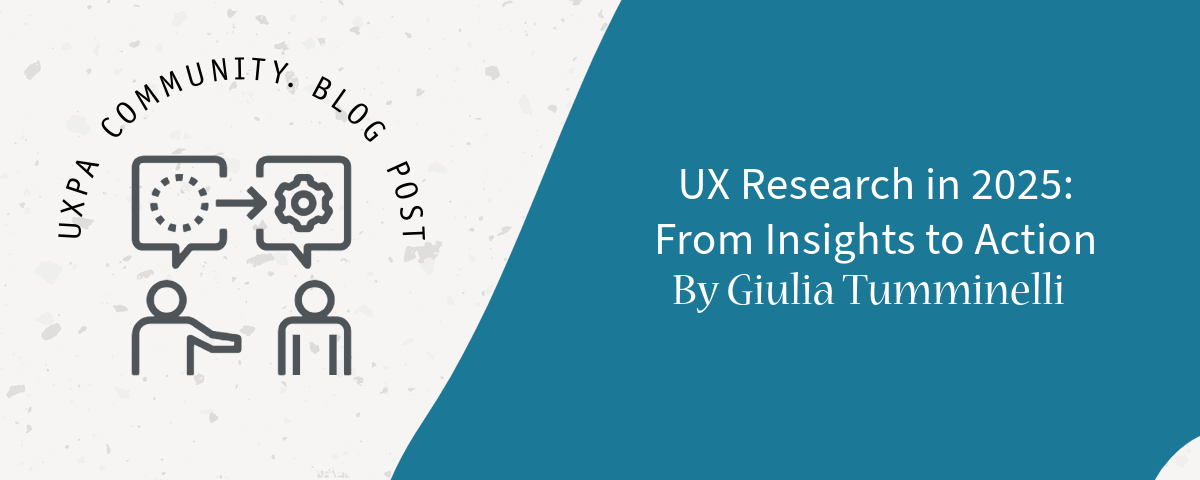Welcome to insights and stories from our wonderful UXPA Community! This new blog series is dedicated to showcasing our members and interesting UX topics. Our goal is to bring together various viewpoints from fellow UXers all over the globe. If you’d like to participate, please email volunteers@uxpa.org.
The Evolution of Research Activation
In 2025, UX Research has undergone a fundamental transformation. We’ve moved beyond simply gathering insights to actively implementing them through structured frameworks that drive immediate product decisions. This evolution represents a paradigm shift in how research teams demonstrate value and influence product development.
The most forward-thinking organizations have recognized that lengthy reports often lead to “research shelf-ware” — valuable insights that gather dust rather than create impact. Instead, these teams have embraced Activation Workshops as the cornerstone of a more dynamic, collaborative, and results-oriented research process.
The Power of Activation Workshops
As someone who has implemented this approach across multiple product teams. I’ve witnessed firsthand how Activation Workshops can transform the traditional research-to-implementation pipeline. These workshops aren’t just presentation sessions — they’re collaborative decision-making forums where cross-functional teams collectively translate insights into actionable next steps.
The beauty of Activation Workshops lies in their structure: they provide a framework that moves teams from passive consumption of research to active participation in solution development. Here’s the framework I’ve refined over the past year:
Phase 1: Strategic Problem Prioritization
The initial phase transforms raw research findings into clearly defined problem statements that resonate with all stakeholders:
- Insight Translation: Research insights are reframed as specific problem statements, documented visually (typically in collaborative tools like Miro or Figma) for alignment
- Dual-Axis Evaluation: Each problem undergoes rigorous assessment using two critical metrics:
- Impact Score (1-10): How directly this issue affects core product metrics, user satisfaction, and business outcomes
- Evidence Strength (1-10): The quality and quantity of supporting data, from observational insights to statistical significance
- Collective Decision-Making: Product managers, designers, engineers, and researchers collaborate to rate each problem, creating a heat map of priorities that focuses team energy on the most crucial issues
This democratized approach ensures the most significant problems rise to the top, creating a shared understanding that drives commitment from all stakeholders.
Phase 2: Solution Hypothesis Mapping
With prioritized problems identified, the workshop shifts to generating potential solutions through structured ideation:
- Divergent Thinking: For each top-priority problem, participants generate multiple solution hypotheses, drawing on both existing research and creative problem-solving
- Solution Categorization: Hypotheses are collectively organized into three strategic buckets:
- Quick Wins (Now): Low-effort, high-confidence solutions ready for immediate implementation
- Testable Hypotheses (Next): Promising ideas requiring validation through A/B testing, prototyping, or other research methods
- Complex Challenges (Later): Fundamental issues requiring deeper research or significant product changes
- Commitment Capturing: The workshop concludes with explicit commitments from each team member - specific actions, owners, and timelines that transform insights into concrete next steps
A Visual Representation of the "Activation Workshop" 🔥

From Workshop to Impact: Closing the Loop
What truly distinguishes the 2025 approach is what happens after the workshop. Successful research teams now track the implementation journey of each insight:
- Impact Dashboard: Research teams maintain visible tracking systems showing how many insights have progressed from identification to implementation
- Implementation Retrospectives: Regular check-ins evaluate which solutions were implemented and their measurable impact on user behavior and business metrics
- Continuous Feedback Loop: Insights from implementation fuel the next research cycle, creating a virtuous circle of discovery and action
The New Metrics of Research Success
In this evolved landscape, UX research effectiveness is no longer measured by the volume of reports produced or even by the quality of insights generated. Instead, success is defined by:
- Activation Rate: The percentage of key insights that translate into concrete action items
- Time-to-Implementation: How quickly insights move from discovery to deployment
- Influence Reach: The number of product decisions directly informed by research insights
Leading the Insight Activation Revolution
For UX researchers looking to embrace this approach, consider these starting points:
- Structure Before Content: Establish your activation framework before conducting major research initiatives
- Stakeholder Integration: Involve key decision-makers early and throughout the research process
- Visualization Power: Use visual collaboration tools to make insights and their potential impacts immediately tangible
- Celebrate Implementation: Recognize teams that successfully translate insights into features or improvements
Overcome Common Challenges by Implementing These Tips
If you encounter resistance, here are some steps you can take:
- Stakeholder Resistance: Run pre-workshop briefings to align expectations
- Time Constraints: Limit workshops to 90 minutes with a clear agenda
- Competing Priorities: Use a weighted scoring system to prioritize objectively
The Future of UX Research Is Bright
As we navigate 2025, the most influential UX researchers aren’t those who generate the most profound insights —they’re the ones who excel at activating those insights across their organizations. By shifting from passive reporting to active facilitation of decision-making, these researchers are redefining their role from observers to catalysts of innovation. The question for every UX researcher is no longer just, “What did we learn about our users?” but rather, “How quickly can we turn those learnings into tangible improvements?” Those who master this transition will lead the next generation of user-centered product development.
About Giulia
I’m Giulia, a mixed-methods Senior Researcher.
I cut through noise by transforming qualitative and quantitative data into impactful product decisions.
With more than seven years of experience in the tech industry, I understand exactly what empowers product teams to make confident, informed decisions that lead to product success!
My specialties are:
- Assigning a Monetary Value to Research, making its impact tangible
- Igniting stakeholders’ passion for Research by speaking their language and demonstrating a deep understanding of their challenges
- Making Research Actionable and applicable to real-world scenarios
- Delving into Behavioral Research & Design to drive meaningful change
If you want to chat about UX Research and beyond, you can find me on LinkedIn: https://www.


